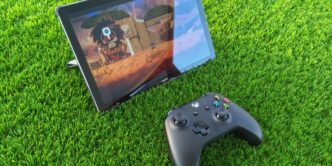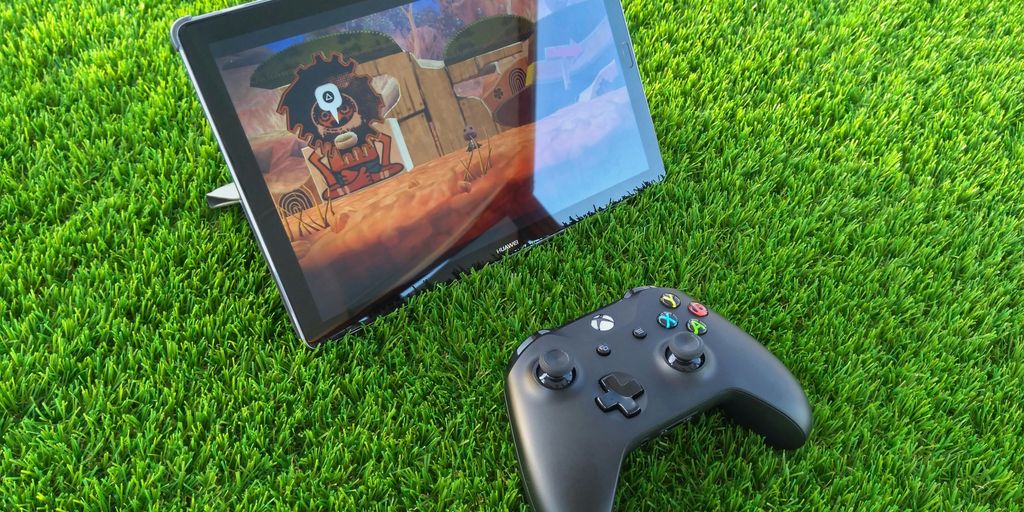So, you’re thinking about getting into portable gaming, huh? Or maybe you just want to upgrade your current setup. Well, android gaming handhelds are a pretty big deal right now, and there are tons of options out there. It can feel a bit much trying to figure out what’s what, but don’t worry, we’re here to help you sort through it all.
Key Takeaways
- Finding the right android gaming handheld means thinking about what you want to play and how much you want to spend.
- When you pick one, pay attention to how fast it is, what the screen looks like, and how long the battery lasts.
- You can make your handheld gaming better by setting up controls and getting useful extras.
- Many android gaming handhelds are good for playing older games using special programs.
- The future of these handhelds will likely involve stronger chips and playing games from the cloud.
Understanding the Android Gaming Handheld Landscape
The Evolution of Portable Gaming
Remember the days of chunky Game Boys and Tamagotchis? Portable gaming has come a long way! It’s wild to think about how we went from those simple, dedicated devices to the powerful Android gaming handhelds we have today. The industry started with basic LCD screens and limited processing power, but now we’re rocking high-resolution displays and processors that can handle some pretty intense games. It’s been a journey of constant innovation, driven by the desire to take our favorite games on the go.
- Early handhelds focused on simplicity and battery life.
- The introduction of color screens and cartridges expanded gaming possibilities.
- Modern handhelds prioritize performance and connectivity.
Why Android Dominates Handhelds
So, why Android? Well, it’s all about flexibility and accessibility. Android provides a platform that’s open, customizable, and already familiar to millions. This means developers can easily port their games, and users have access to a massive library of titles through the Google Play Store. Plus, the ability to emulate classic consoles on Android devices adds another layer of appeal. It’s a win-win situation that has solidified Android’s position in the handheld market. It’s also cheaper for manufacturers to use Android than to develop their own operating systems.
Navigating the Diverse Market
Okay, so you’re ready to jump into the world of Android gaming handhelds? Great! But be prepared – it’s a crowded market. You’ve got everything from budget-friendly options to high-end devices with all the bells and whistles. Some are designed for hardcore gamers, while others are more casual-friendly. It’s important to do your research and figure out what features are most important to you. Are you looking for raw power, a great screen, or long battery life? Knowing your priorities will help you narrow down the field and find the perfect device for your needs. It can be overwhelming, but don’t worry, we’ll help you sort through it all!
Key Features to Look For in an Android Gaming Handheld
Processing Power and Performance
Okay, so you’re thinking about getting an Android gaming handheld? The first thing you gotta consider is the guts of the thing – the processor. This is what determines how well your games will run. You don’t want lag, stuttering, or any of that nonsense. Look for something with a decent Snapdragon or MediaTek chip. More cores and higher clock speeds generally mean better performance. But don’t just look at the numbers; check out some reviews to see how it handles actual games. Some processors are better optimized for gaming than others. It’s also worth noting that the Snapdragon 8 Elite is not always the best choice for handhelds due to cost and compatibility issues.
Display Quality and Immersion
Next up: the screen. What’s the point of having a powerful handheld if the display is garbage? You want something that’s sharp, vibrant, and has good color accuracy. Resolution matters, of course. 1080p is a good target, but even 720p can look fine on a smaller screen. Refresh rate is also important. A higher refresh rate (like 90Hz or 120Hz) will make games feel smoother and more responsive. And don’t forget about screen size! Too small, and it’s hard to see what’s going on. Too big, and it’s not really a handheld anymore. Here’s a quick rundown:
- Resolution: Aim for at least 720p, 1080p is preferable.
- Refresh Rate: 60Hz minimum, 90Hz or 120Hz is better.
- Panel Type: IPS for good viewing angles and color accuracy, OLED for vibrant colors and deep blacks.
Battery Life and Portability
Finally, you need to think about how long you can actually play before needing to plug in, and how easy it is to lug around. A powerful processor and a bright screen will drain the battery fast. Look for something with a decent-sized battery (at least 5000mAh) and read reviews to see what kind of real-world battery life people are getting. Portability is also key. If it’s too big or too heavy, you’re not going to want to carry it around with you. Consider the size, weight, and overall ergonomics of the device. Can you comfortably hold it for extended periods? Does it fit in your bag or pocket? These are important questions to ask. Turning your phone into the ultimate gaming handheld is also an option to consider if portability is a major concern.
Optimizing Your Android Gaming Handheld Experience
So, you’ve got your Android gaming handheld. Awesome! But just having the device is only half the battle. Getting the most out of it requires a little tweaking and know-how. Let’s get into how to make your gaming experience truly shine.
Customizing Controls and Settings
One of the first things you’ll want to do is mess with the controls. Most Android gaming handhelds let you remap buttons, adjust sensitivity, and create custom profiles for different games. Experiment with different layouts to find what feels most comfortable for you.
- Remapping Buttons: Change the function of each button to suit your play style.
- Adjusting Sensitivity: Fine-tune the analog sticks and triggers for better precision.
- Creating Profiles: Save different control schemes for various games or emulators.
Don’t forget about the system settings! Adjusting display settings, audio output, and power management can significantly impact your gaming experience. For example, turning down the brightness can save battery, while using headphones can improve audio clarity.
Essential Accessories for Android Gaming Handhelds
Accessories can really take your handheld gaming to the next level. Here are a few must-haves:
- Protective Case: Keep your device safe from scratches and bumps.
- Screen Protector: Prevent scratches and smudges on the display.
- External Controller: For games that benefit from a full-sized controller, like fighting games.
Beyond the basics, consider things like portable chargers for extended gaming sessions and high-quality headphones for immersive audio. A good screen protector is a must.
Software Enhancements and Custom ROMs
If you’re feeling adventurous, you can explore custom ROMs. These are modified versions of Android that can offer improved performance, battery life, and features. However, flashing a custom ROM can be risky, so do your research first!
Even without custom ROMs, there are plenty of software tweaks you can make. Consider using apps that optimize performance, manage background processes, and clean up junk files. These can help your device run smoother and faster. For example, you can turn your phone into the ultimate gaming handheld with the right software.
The Power of Emulation and Retro Gaming on Android Handhelds
Android gaming handhelds aren’t just for playing the latest mobile games; they’re also fantastic for reliving the classics. The ability to emulate retro consoles on these devices opens up a whole new world of gaming possibilities. It’s like having a museum of video game history right in your pocket. I remember spending hours trying to get my old emulators working on my PC, and now it’s so much easier on these handhelds. It’s pretty cool.
Reliving Classic Titles
The biggest draw of Android gaming handhelds is their ability to play games from older consoles. We’re talking NES, SNES, Sega Genesis, PlayStation 1, and even some PSP titles. It’s amazing to see these games running smoothly on a modern device. It’s not just about nostalgia, though. Many of these games still hold up incredibly well, with engaging gameplay and memorable stories. I’ve been replaying some of my favorites, and it’s like experiencing them for the first time again. The Android OS makes it easy to find and install emulators.
Setting Up Emulators on Your Device
Setting up emulators on an Android handheld is generally straightforward. Here’s a basic outline:
- Find an Emulator: Search the Google Play Store or dedicated retro gaming communities for emulators compatible with the systems you want to emulate. There are tons of options, so read reviews and find one that works for you.
- Install the Emulator: Download and install the emulator app on your handheld.
- Obtain ROMs: This is where things get a little tricky (more on that in the next section). You’ll need ROM files of the games you want to play. These are essentially digital copies of the game cartridges or discs.
- Load ROMs: Most emulators have a simple interface for loading ROM files. Just point the emulator to the directory where you’ve stored your ROMs, and you should be good to go.
The Legalities of Retro Gaming
Okay, let’s talk about the elephant in the room: ROMs. Downloading and sharing ROMs of games you don’t own is generally considered copyright infringement. It’s important to be aware of the legal implications before you start downloading ROMs. Some argue that if you own the original game, downloading a ROM for personal use is acceptable, but the legality of this is still debated. A good rule of thumb is to only download ROMs of games you already own, or to explore the world of [PortMaster support](microSD card) for legally obtained indie games.
Top Android Gaming Handhelds on the Market
It’s 2025, and the Android gaming handheld market is booming! So many choices, it can be tough to pick the right one. Let’s break down some of the top contenders right now.
Flagship Models and Their Strengths
When you want the best of the best, you’re looking at the flagship models. These pack serious power and features, but also come with a higher price tag. Think of them as portable gaming PCs, but running Android.
- AYN Odin2 Pro & Max: This device is a powerhouse, known for its strong performance and sleek design. It can handle demanding games and emulation with ease. If you want top-tier performance, the AYN Odin2 Pro is a solid choice.
- Retroid Pocket 4 Pro: A strong contender offering great performance at a reasonable price. It’s a favorite for emulation and Android gaming.
- GPD XP Plus: This one stands out with its modular design, letting you customize the controls to fit different game types. It’s a bit niche, but if you value customization, it’s worth a look.
Budget-Friendly Android Gaming Handhelds
You don’t need to spend a fortune to get a great Android gaming experience. There are plenty of budget-friendly options that still deliver solid performance for the price. These are perfect if you’re just getting started or don’t want to break the bank.
- Anbernic RG35XX: A popular choice for retro gaming on a budget. It’s small, portable, and can play a wide range of classic games.
- Retroid Pocket 3+: A step up from the RG35XX, offering more power and a larger screen. It’s a great all-around option for Android gaming and emulation.
- Powkiddy RGB20S: Another affordable option with a retro-inspired design. It’s comfortable to hold and offers decent performance for the price.
Emerging Brands to Watch
The Android gaming handheld market is constantly evolving, with new brands and devices appearing all the time. Here are a few emerging brands that are worth keeping an eye on:
- AYANEO: While not exactly "emerging" anymore, AYANEO continues to push boundaries with innovative designs and powerful hardware. Their devices often come with premium features and a higher price tag, but they’re known for their quality.
- AOKZOE: This brand is relatively new, but they’ve already made a splash with their high-performance handhelds. They tend to focus on powerful specs and features that appeal to hardcore gamers.
- ONEXPLAYER: ONEXPLAYER is another brand to watch, known for its larger-screen handhelds and focus on PC gaming compatibility. If you want a device that can handle both Android games and PC games, ONEXPLAYER is a good option.
Future Trends in Android Gaming Handheld Technology
The Role of Advanced Processors
It’s pretty obvious that processors are going to keep getting better. But what does that really mean for Android gaming handhelds? Well, for starters, we can expect to see more demanding games running smoothly. Think Genshin Impact at max settings, or even some PC ports that were previously unthinkable. Beyond raw power, these new processors will likely focus on efficiency, meaning better battery life even when pushing the limits. We might also see more AI integration, which could lead to smarter upscaling and other performance-enhancing tricks. The Snapdragon 8 Elite is a good example of where things are headed.
Cloud Gaming Integration
Cloud gaming is already here, but it’s still got a ways to go before it’s truly mainstream. For Android handhelds, though, it could be a game-changer. Imagine having access to a massive library of games without needing to download anything. The handhelds of the future will likely have tighter integration with services like Xbox Cloud Gaming and GeForce Now. This means better streaming performance, dedicated buttons for cloud gaming functions, and maybe even custom interfaces designed specifically for these services. The dream is to play AAA titles on the go, without worrying about storage space or processing power.
Innovations in Design and Ergonomics
Let’s be honest, some of these handhelds aren’t the most comfortable things to hold for extended periods. Future designs will probably focus on ergonomics. Think more comfortable grips, better button placement, and maybe even modular designs that let you customize the device to fit your hands. We might also see more experimentation with different form factors, like foldable screens or detachable controllers. The goal is to create a device that feels as good to hold as it is to play on. I’m hoping for better cooling solutions too, because nobody likes sweaty palms after an hour of gaming!
Final Thoughts
Okay, so we’ve gone through a lot about these Android gaming handhelds. It’s pretty clear there’s a device out there for just about anyone. You might want to play classic games, or maybe the newest stuff. Your choice really comes down to what you like and what your budget looks like. Don’t get too caught up trying to find the "perfect" one. Just pick something that feels right for you. The main thing is to get playing and enjoy your games, no matter where you are. That’s what it’s all about.
Frequently Asked Questions
What exactly is an Android gaming handheld?
It’s like a small, portable computer designed mainly for playing video games, but it runs on the Android operating system. Think of it as a smartphone or tablet built specifically for gaming, complete with physical buttons and joysticks, not just a touchscreen. This makes playing games much more comfortable and precise.
Why should I pick an Android gaming handheld instead of a regular game console?
Android handhelds offer a lot of flexibility. They can often be more affordable than big consoles, and they let you play a huge variety of games, from new mobile titles to classic games from older systems using special software. Plus, they’re super easy to carry around, so you can game anywhere.
Can I play all my favorite games from the Google Play Store on these devices?
Most of the time, yes! Since these devices use the Android operating system, they can access the Google Play Store. This means you can download and enjoy nearly any game or app available there, just like you would on an Android phone or tablet. Some games might play better with the physical controls.
What are the most important things to consider when buying one?
When you’re looking to buy an Android gaming handheld, focus on a few key things. First, check the screen – you want one that looks good and is clear. Second, think about battery life; a longer battery means more playtime. Third, look at how powerful it is (its processor) to make sure it can handle the games you want to play without being slow.
Is it difficult to play old, classic games on these handhelds?
Playing older games, often called “emulation,” can seem a bit complicated at first, but it’s totally doable. You’ll need to download special apps called emulators, and then find the game files. There are many easy-to-follow guides and videos online that can walk you through the steps to get your favorite retro games up and running smoothly.
What new things can we expect from Android gaming handhelds in the future?
The future looks exciting for these devices! We’ll likely see them get even faster processors, which means games will look better and run smoother. Also, more games might be streamed directly from the internet (cloud gaming), so you won’t need to download them. Designers are also working on making them even more comfortable to hold and use for long periods.














